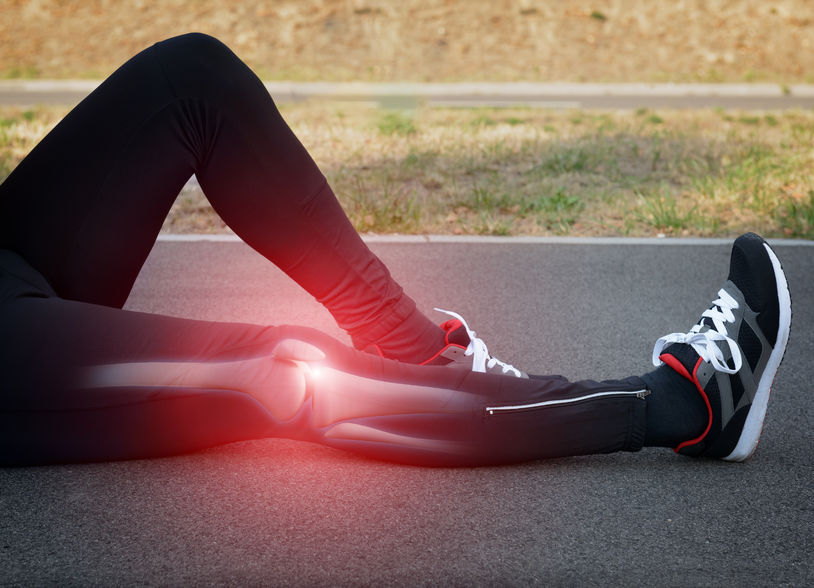What’s New at AOSMI

There is an ongoing debate about whether alkaline water can be beneficial in assisting individuals with the healing processes of the body. Though it is suggested to have some health benefits, there is no scientific evidence to prove that alkaline water is of therapeutic value, specifically with bone health.
Many people discuss the potential benefits of alkaline water as opposed to basic drinking water. There have been claims about its various therapeutic effects, but there are no studies to confirm that alkaline water can, in fact, help you heal. There are more studies that suggest the potential negative effects of alkaline water. These effects include:
- Poisonous reactions
- Reduction in gallbladder processes
- Reduction in stomach acidity used to kill bacteria
- Heart problems
There have also been claims made on the effects of alkaline water on bone resorption, the process where old bone cells are broken down and replaced by new ones. Supporters of alkaline water claim it reduces bone resorption by increasing the mineral density in bones, thereby increasing overall bone strength. Yet, these findings are only based on a study of thirty women. It is also uncertain whether alkaline water can reduce bone resorption in the long term. Other claims suggest alkaline water can prevent disease processes, but strong evidence finds the opposite to be true in the prevention of osteoporosis.
Overall, alkaline water has not been proven to help heal individuals. However, an orthopedic specialist can assist individuals by developing a strategy toward healing and promoting long-term bone health. Contact AOSMI to schedule an appointment to learn what our team of specialists can do for you.

Because their bones are still growing and strengthening, children are at increased risk for orthopedic injuries. A common injury sustained by children is known as a growth plate fracture. Growth plates are found at either end of the long bones of the body, such as the femur in the thigh and the bones in the forearms and hands. As the child grows, the long bones grow from the solidification of the growth plates into solid bone.
Because of the instrumental nature of the growth plates in the development of the skeletal structure as a child matures, any damage to the growth plate can result in curved or uneven growth of the bones. Growth plate fractures are classified depending on the way the bone is impacted. The classification, as well as other factors like which bone is affected and the age of the child, determine the course of treatment.
Treatment for bone plate fractures can be surgical or nonsurgical. Nonsurgical treatment typically involves bracing the bones in the proper alignment so that they are forced to stay in the correct position as they heal. However, depending on the severity of the fracture, surgery to the bone plate may be required. The procedure can involve moving the bone fragments back into their proper positions and then wiring, screwing, or plating them to remain in proper alignment.
For all growth plate fractures, treatment is most effective if the condition is addressed early. After a week or so, the bones will begin to heal, and any misalignment may not be reversible. If you believe your child has sustained a growth plate fracture, schedule an appointment immediately with an orthopedic specialist at Advanced Orthopedic and Sports Medicine Institute.

Pain in the joints can have a variety of causes. For some, the pain is caused by an impact, repetitive stress, or another injury. For others, chronic joint pain can be a symptom of a condition like arthritis. Joint pain can cause many debilitating short and long term effects, including impaired mobility and permanent damage to the joints. No matter the cause, pain in the joints is an indication that something is not right with your body, and proper treatment will be needed to restore functioning and manage or eliminate pain.
What patients may not know is that these treatments are not necessarily surgical. Before resorting to surgery, an orthopedic specialist may recommend any of the following to treat or manage joint pain.
- Physical Therapy. A physical therapist will teach the patient exercises that build strength and promote flexibility. By practicing these exercises regularly, the joint can strengthen and pain can lessen.
- Massage. By carefully applying pressure to the joint and areas around it, a massage therapist can alleviate pain in the joint. Massage techniques can also be taught to patients to utilize ongoing.
- Bracing. Wearing a brace on the affected joint(s), particularly if pain is the result of a repetitive or sports injury, lessens pressure on the affected joint, allowing cartilage around the joint to heal.
- Injections. Injections, such as corticosteroids or Hyaluronic Acid , can lessen joint pain and inflammation. However, these results are typically short-term, and ongoing treatments are required.
- Acupuncture. This ancient Eastern medical tradition involves the application of small needles to various points on the body, relieving tight or spastic muscles.
To learn more about both surgical and nonsurgical treatment options for joint pain, schedule an appointment with the NJ orthopedic surgeons at Advanced Orthopedics and Sports Medicine Institute.

Women who participate in sports work hard to improve their strength, endurance, and fitness levels. But, while we spend hours devoted to fitness, we often overlook an equally important component to athletic training: nutrition.
Female athletes often fail to provide their bodies with the proper nutrition to match their performance output. Let’s sort through the trendy diets, bad advice, and misconceptions and learn the best way to care for and nourish our active bodies.
This is what you will need to maintain peak performance:
Calcium. Most women know that teeth and bones need calcium to stay strong. But your heart and muscles also rely on calcium to function properly. Over time, a calcium deficiency can cause serious health complications, including brittle bones that fracture easily. Orthopedic specialists recommend women get 1300mg of calcium daily. Dairy products such as yogurt, cheese, and even ice cream (in moderation!) provide a significant amount of the calcium your body needs.
Iron. Female athletes utilize their iron supply while training. However, when iron is not replenished it can lead to a condition called anemia. Anemia causes exhaustion and makes sustaining physical activity challenging. Fish, poultry, and meat provide iron. Vitamin C-containing foods also provide iron. If you suspect anemia, consult your doctor. Iron supplements should only be taken under the supervision of a physician.
The Diet Trend. Beware of trendy diets and supplements! Most fad diets are restrictive and do not provide athletes with enough carbohydrates, proteins, or calories to perform their best. Be skeptical about supplements. These “natural” supplements are not regulated like food or medicines. There is no guarantee behind their claims, ingredients, or safety. Stay with the tried and true: Eat a variety of healthy, nutritious foods to maintain optimal health.
Fluids. Staying hydrated is crucial to your performance. A dehydrated athlete can experience tiredness, cramps, and light-headedness. To keep yourself properly hydrated, drink 8-16 oz. of water or a sports drink before you begin your fitness routine. Continue to hydrate throughout your activity and then again after you complete your training.
Calories, Carbohydrates, Proteins, Oh My! When you are training hard and building muscle, your body needs calories, carbohydrates, and proteins to keep going. Remember to eat regular meals and nutritious snacks throughout the day. Choose lean meats, dairy, whole grains, vegetables, and fruits to keep performing at your best. Also remember to enjoy a meal high in carbohydrates a few hours before you train.
For more information about optimizing your diet to support your personal fitness goals, schedule and appointment with Advanced Orthopedics and Sports Medicine Institute.

Millions of Americans suffer from from some degree of hip pain. You may have noticed a stiffness or discomfort in your hips in the morning, or experienced achiness or soreness after activities such as walking or jogging. This pain can be an early sign of hip arthritis.
To understand hip arthritis, you must understand how the hip joint works. The hip is a ball and socket joint and, similar to your shoulder, allows for a full range of movement. Both the ball and socket in the joint are covered with a layer of flexible cartilage to cushion the bones as you move. It is when this cartilage begins to wear down that you begin to experience painful symptoms of arthritis. As the cartilage continues to deteriorate, your body reacts by creating bone spurs within the joint. These small, bony growths inside the joint can cause you greater pain and lessen your mobility over time.
Depending on the severity of your condition, New Jersey orthopedic surgeons will develop a treatment plan which may include medication, physical therapy, and other supplemental treatments. However, when the joint cartilage wears away altogether, the bones in the hip socket rub together, resulting in nearly constant pain that can interrupt your daily routines. When hip arthritis symptoms are no longer manageable through medication, it is time to examine a surgical course of treatment. An orthopedic specialist may recommend minimally invasive hip replacement surgery to reduce your discomfort.
Many patients are concerned when their orthopedic specialist recommends hip replacement surgery. But this minimally invasive procedure is different than traditional hip replacement and offers many benefits.
The benefits of minimally invasive hip replacement surgery:
- Smaller incisions
- Less damage to surrounding muscles and bones
- Shorter hospital stay
- Quicker recovery
- Decreased risk of complications
- Less blood loss during surgery
Your team of NJ orthopedic specialists will develop the right course of treatment to meet your needs. To find out what your treatment options are, contact Advanced Orthopedics and Sports Medicine Institute to schedule an appointment.







